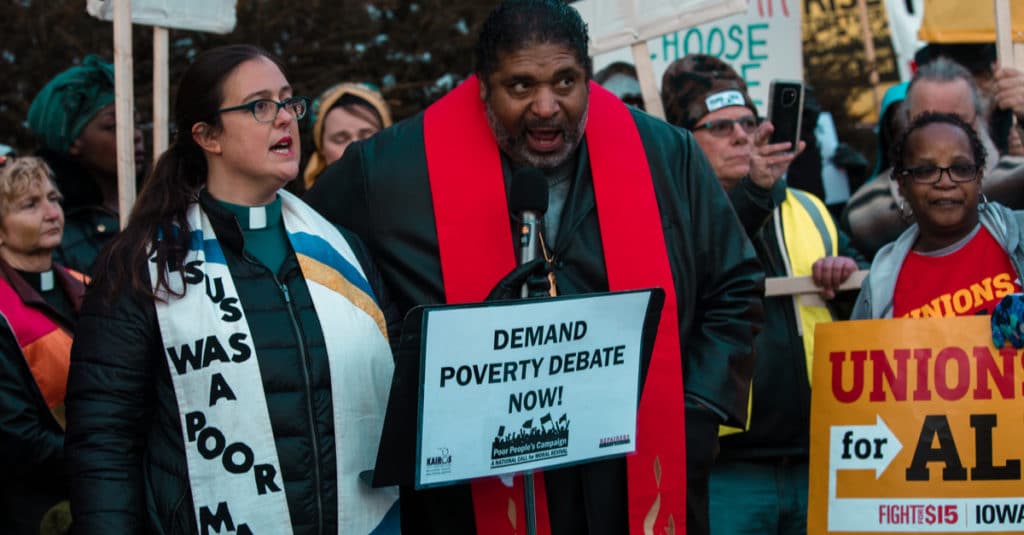More than a quarter of Americans have no emergency fund to carry them through a financial crisis, and almost half have said they’re struggling to feed their families.
Inflation has soared to the highest level since December 1981 as Americans continue to grapple with unprecedented financial challenges, and most families have been caught off guard.
As gas prices hit record highs, wages remain stagnant and interest rates make it more expensive to borrow money, more than a quarter of Americans have no emergency fund to carry them through a financial crisis.
Although financial experts advise families to have a savings buffer big enough to cover three to six months of expenses or more, only 35% of Americans say they have that much stashed away, while 27% have no emergency savings at all, and another 17% don’t have enough to cover a full month of expenses.
This leaves households struggling to pay food and utility bills.
Fewer than 10% of Americans said that if hit with an unexpected $1,000 expense, they’d be able to cover it without having to turn to a payday lender, cash advance app like Dave or other short-term high-interest loan product to bridge the gap.
Friday’s “catastrophically bad” report from the Bureau of Labor Statistics showed price increases across the board, including housing, airfare, vehicles, medical care, home goods, recreation and apparel. But just how hard are these increases hitting American households? DebtHammer.org set out to learn. We surveyed 625 Americans to learn about the financial challenges they’ve faced so far in 2022. Here’s what we found:
Table of Contents
Key takeaways
People are going hungry: About 49% of Americans have hit a point where their families were struggling to have enough food to eat. More than 10% said their family has skipped meals to cut back on food spending. Another 9% turned to a food bank or food pantry, and 18% have cut back on purchases and bought less expensive items to stretch the grocery budget.
Wages aren’t keeping up with inflation: The annual inflation rate for the United States is 8.3% for the 12 months ended April 2022, but 43% of Americans have seen no wage increase at all, and another 15% have seen their wages decrease. Just under 11% of Americans have seen a wage increase that keeps up, with 7.5% getting a pay hike of 10% or more and another 3% getting a raise totaling 8% to 10%.
We can’t pay the bills: 34% of Americans have fallen three or more months behind on at least one bill, which triggers expensive late fees. Credit cards are the most common, with utilities and mortgage/rent also topping the list.
Other findings
We’re using payday loans: About 23% said they’ve had to use a short-term loan to cover basic expenses. The most common reasons cited were to buy groceries (27.59%) and pay utility bills (30.34%). Other reasons cited included gasoline, car repairs, mortgage or rent payments, medical bills, student loans or child support and alimony.
Finances are boosting anxiety: 21% have worried at some point this year about foreclosure or eviction, while 18% have feared that their car could be repossessed due to falling behind on a car payment or title loan.
We have a lot of medical debt: 38% say they owe medical debt, ranging from a low of $250 (9%) to upwards of $50,000 (1.2%), though 89% of respondents have some form of health insurance.
Higher education costs add up: 37% have student loan debt ranging from as low as $1,000 to upwards of $100,000. If payments resume as scheduled in August, those payments will put more financial strain on younger households.
We disagree on student loan cancellation: Almost 40% of respondents say student loans should be repaid in full, though some believe borrowers’ interest rates should be capped. More than 75% of that group either never had student loans, or have already paid them back in full.
About 30% support canceling all student loans. Other ideas that also win support include partial cancellation for all borrowers, situation-based cancellations based on income, the age of the original loans or whether a borrower has faced a significant health crisis.
Age doesn’t matter: When it comes to student loan cancellation, only those over age 60 seem to be unified in opposing the idea.
Methodology
DebtHammer collected survey responses from a random sample of 625 adults aged 18 or older via SurveyMonkey and Reddit from May 13-16. All respondents live in the United States. Each response was anonymized using a unique user ID.
Of those we surveyed, 67% were female, 33% were male, and 1% identified as either non-binary/other or preferred not to say. About 23% of respondents were aged 18 to 29, 25% were aged 30 to 44, 30% were between ages 45 to 60 and 22% were over the age of 60.
The bottom line
Wages haven’t kept up with inflation, and rising food costs, higher utility bills and record gas prices, Americans are feeling a financial pinch, forcing them to fall behind on their bills or turn to expensive short-term loans. As interest rates rise, the cost to borrow will continue to become more expensive, exposing families that are already most vulnerable to even more risk.
The professors weigh in

Dr. John Hilston
Professor of Economics/History/Business at Eastern Florida State College
What’s the one piece of advice you’d give to anyone struggling to afford day-to-day expenses?
The solution will come with increased income and/or reduced expenses. This is not an easy problem, but it’s not an impossible problem either. Everything must be on the table. Spending cuts may be the quickest way to improve on this difficult problem. Temporary spending cuts need not be permanent. Do you have anything of value that can be sold? That might help, too.

Dr. Bisrat Kinfemichael
Assistant Professor of Accounting and Finance, New York Institute of Technology
To anyone struggling to afford day-to-day expenses, my one piece of advice would be to make a list of the daily expenses and ask oneself if all the items on the list are essential. A fundamental principle of consumer behavior in economics is that the value of consumer spending shall not exceed the consumer’s income. Therefore, as much as possible, one needs to limit expenses so that they do not go beyond income and cut back on non-essential spending.
What steps, in your opinion, can people take to try to boost their income right now?
Dr. Hilston: Consider a part-time job. Do you have a reliable vehicle? Consider driving for a rideshare service. That can be very flexible work.
Longer term: 1. Earn a college degree (during the Great Recession, unemployment was 8.1% for the general population, but only 4% for college grads); 2. Be willing to (temporarily) accept a lower wage and/or change careers if you find yourself unemployed. This need not be forever!!; 3. Know where to find job postings…indeed.com and others such as monster.com and LinkedIn are good places to look for jobs.
Dr. Kinfemichael: In my opinion, people may boost their income right now by fully exploring the available job opportunities that match their skills and choose the one that pays the highest compensation. It is well documented that U.S. workers work the longest hours among advanced economies and that is another option to increase income right away, by increasing the number of hours of work.
What’s the most important piece of advice you have to help Americans tackle long-term debt, like medical bills and student loans?
Dr. Hilston: Medical bills are (unfortunately) unavoidable for some. But payment terms may be negotiable. Don’t be afraid to reach out to customer service regarding your options. On the other hand, student loans might be minimized with some planning. What is your expected future wage? Clearly this depends on the field. If the expected future wage is low, it would be wise to attend a lower-tuition institution. And apply for every scholarship in sight!
Dr. Kinfemichael: My advice for people dealing with long-term debt is that be very reluctant to take out loans with high interest rates and pay off any existing debt with high interest rates quickly. This is because the interest rate on a loan plays a critical role in how the debt accumulates over time. For example, if the original loan is $50, 000 and the interest rate on the loan is 24%, the debt will double in around 3 years and become $100, 000, and the compounding process continues. This concept is very important and require us to understand the power of compounding in finance. It is known as the Rule of 72: it will take approximately 72 divided by the interest rate, 72/24 in our example, number of years for the loan to double in size. Unless the loan is extremely important and no other option is available, it is better not to take out a loan with high interest rate since it will cost us dearly.



